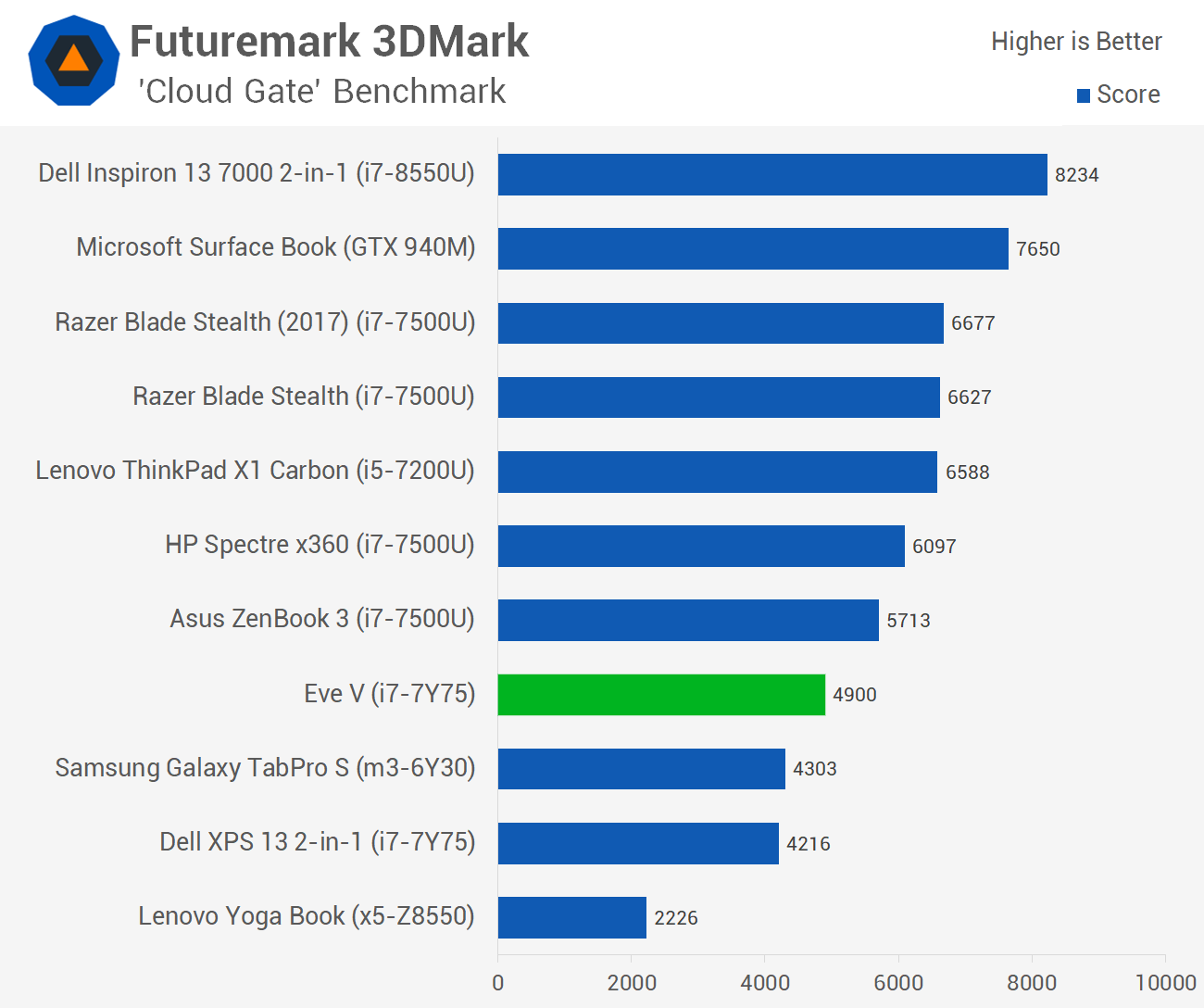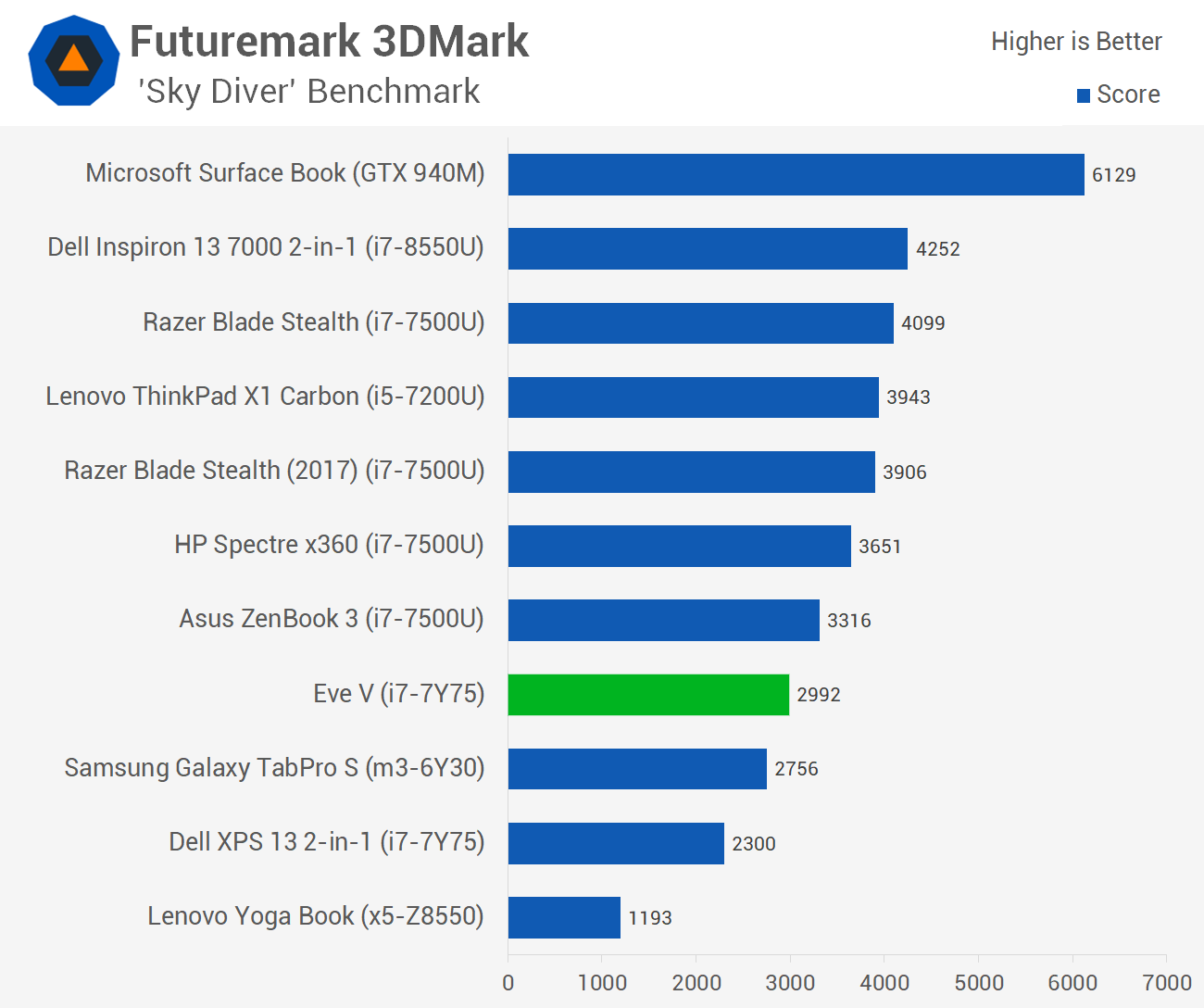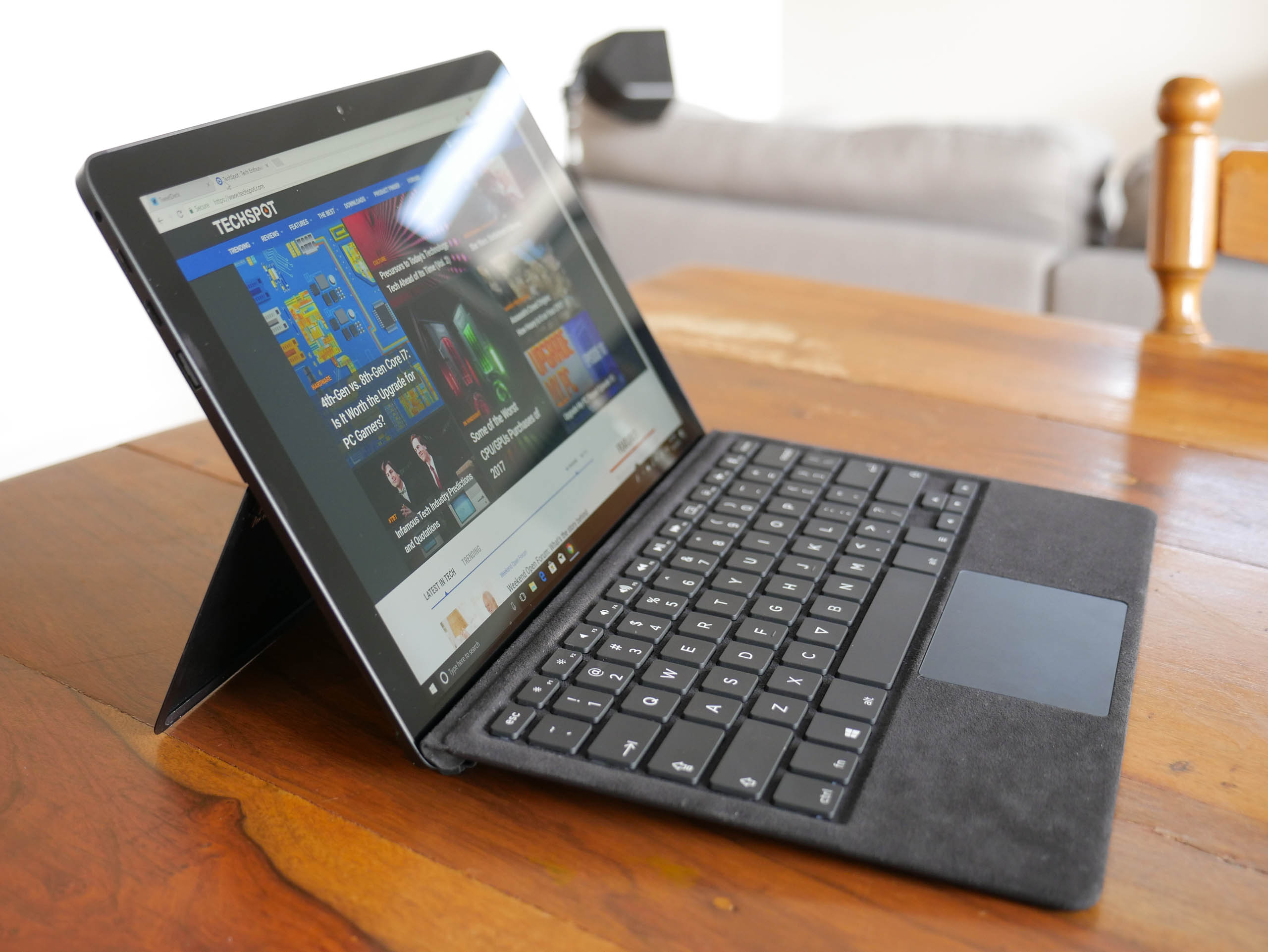System Performance
As discussed previously, our review unit came loaded with the Core i7-7Y75, which is a Kaby Lake CPU with a 4.5W TDP. It has two cores and four threads, with a base clock of 1.3 GHz and a maximum turbo clock of 3.6 GHz, 4MB of L3 cache, plus Intel HD 615 graphics clocked up to 1050 MHz. While the HD 615 has the same number of execution units as the HD 620 graphics used in base U-series CPUs, the limited TDP of the 7Y75 throttles the GPU in a lot of situations.
The Core i7-7600U used in top-spec Surface Pros does have a decent spec advantage. It also has two cores and four threads, but a base clock of 2.5 GHz with a maximum turbo clock of 4.0 GHz. The GPU gets bumped up to Iris Plus 640 graphics clocked at 1100 MHz, with twice the execution units and a much larger TDP to play with relative to the 7Y75. You can see purely on specifications that Intel's U-series parts do have a speed advantage, which does lead to some concerns over the Eve V's performance compared to the Surface Pro.





Unfortunately I do not have data from the most current generation of Surface Pro devices, but I have tested other laptops that use U-series chips.
When the Core i7-7Y75 is tasked with relatively short workloads - under 20 seconds, for example - the performance difference between it and something like the Core i7-7500U is relatively small, in the range of 20 percent or less. This is seen in workloads like Excel Monte Carlo, WinRAR compression and MATLAB. A CPU like the i7-7660U does clock higher, so these margins will extend somewhat, but it does give a rough idea of where the 7Y75 sits among other offerings.
The key thing to take away from these benchmarks is that light or short workloads form most tasks performed on a mobile device. Opening apps, loading web pages, editing documents, light photo editing and so forth all hit the CPU for a short period of time, and it's here that the Kaby Lake Y-series CPU in the Eve V doesn't fall too far behind its U-series counterparts. In general, U-series models are faster in these tasks, but not by enough to cause a painful experience for Y-series users. In fact for most of my time with the Eve V, performance was perfectly fine and very similar to Kaby Lake laptops I've used.



It's in longer, more intensive workloads that the 7Y75 really suffers. Video rendering in Handbrake, for example, is 50% faster with the U-series i7-7500U, and again that margin grows with the Core i7-7660U. Cinebench, another rendering workload, is a good 47% faster with the 7500U in the multi-threaded workload.
These are prime examples where the higher TDP allows the U-series to significantly outperform Y-series. If you're thinking of rendering a video, for example, it could take half an hour less on a U-series machine.


GPU performance is another area where the Y-series SKU suffers compared to its U-series counterpart. In 3DMarks workload like Cloud Gate, even just HD 620 graphics pulls away by 30 to 40 percent. Throw Iris Plus 640 graphics in the mix, and the 7Y75 just can't keep up.
The Eve V and most other low power devices aren't well suited to gaming, but even in light graphics workloads or games you're going to see better performance from U-series CPUs no matter what. The Eve V can be connected to eGPUs through Thunderbolt 3 for a boost to performance, though this isn't ideal for portable use.
Again, the lower performance of the i7-7Y75 (and also the i5-7Y54) is something you'll have to keep in mind when assessing whether the Eve V is the right choice for you.
